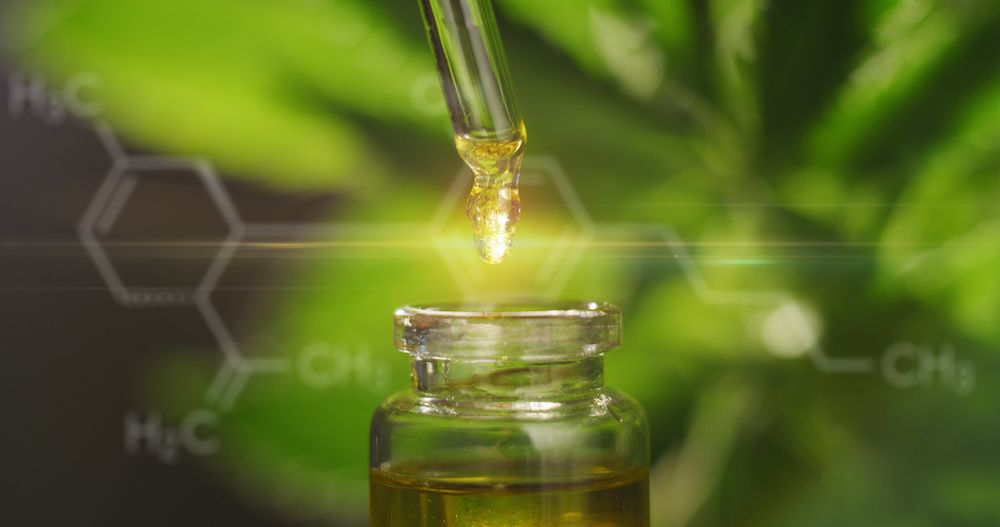How Rare Cannabinoids Are Disrupting the Pharmaceutical Industry
By 2029, the global market for cannabinoid-based pharmaceuticals will reach $50 billion.

Cannabinoids are compounds found in the cannabis plant. The most well-known cannabinoids are cannabidiol (CBD) and tetrahydrocannabinol (THC). However, there are over 200 known cannabinoids, including rare cannabinoids like cannabigerol (CBG), cannabinol (CBN), tetrahydrocannabivarin (THCV), and more. These rare cannabinoids are even more potent in their medical benefits than CBD and don’t contain the psychoactive properties of THC.
By 2029, the global market for cannabinoid-based pharmaceuticals will reach $50 billion.1 These rare cannabinoids are an inexpensive and natural way to work with your body. By possessing a multitude of medical benefits without the cost and adverse effects of some types of traditional medicine, rare cannabinoids will transform the pharmaceutical industry.
The Impact of Cannabinoids on the Body
The endocannabinoid system (ECS) is composed of 3 main components: receptors, enzymes, and endocannabinoids. It plays a vital role in regulating a variety of functions and processes such as sleep, appetite, mood, memory, production, and fertility. Through the ECS, cannabinoids interact with our bodies and trigger beneficial effects.
Endocannabinoids are molecules made by the body; they help keep internal functions moving properly. The endocannabinoid receptors are found throughout the body, and the endocannabinoids link to them to send a signal that the ECS needs to take action. Lastly, the enzymes break down the endocannabinoids once they’ve carried out their purpose.
Rare cannabinoids act as a key supplement to endocannabinoids. Both rare cannabinoids and endocannabinoids are crucial for human health as they tap into the ECS. The ECS functions all contribute to homeostasis, the stability of the body’s internal environment.
Potential to Disrupt Pharmaceuticals
Early studies are showing the efficacy of cannabinoids against a large variety of indications. There have been over 50 clinical trials on cannabinoids, which have provided a significant amount of data on their health benefits.2
For example, preclinical and clinical studies have suggested a potential value for CBD in some neuropsychiatric disorders, including epilepsy, anxiety, and schizophrenia.3 That’s just the tip of the iceberg of the types of benefits that cannabinoids have been shown to provide.
Along with the health benefits of cannabinoids, a new patented method of biosynthesis production produces cannabinoids at 75% to 90% less cost than the current market. This breakthrough has enabled the production of pharmaceutical-grade rare cannabinoids that are significantly cheaper, with less impact to the environment.
The traditional method of producing rare cannabinoids through plants can be harmful, since there are a lot of byproducts and toxins in them. Biosynthesis produces the safest and most effective cannabinoids, as they are the exact same molecules as what occurs in nature.
Through biosynthesis, pharmaceutical companies are uniquely positioned to be a major player in the cannabinoid space. One reason is that biosynthesis makes rare cannabinoids cheaper and safer, giving pharmaceutical companies more incentive to use them, and another reason is pharmaceutical companies can get insurance reimbursement.
Impact on the Medical Industry
Anyone interested in better health will be interested in cannabinoids. Cannabinoid-based pharmaceuticals will overtake the market as rare cannabinoids become cheaper and more plentiful.
There are new medical treatments that rare cannabinoids will create. Rare cannabinoids like CBG/CBGA, CBN/CBNA, THCV/THCVA, and THCA all have significant evidence of major health benefits. For example, there have been many clinical trials on CBG/CBGA indicating its potential to help fight inflammation, pain, and nausea.
Another example is THCV/THCVA, which been observed to help diabetes, pain and swelling, anxiety, and tremors from Parkinson disease and amyotrophic lateral sclerosis. Finally, CBN/CBNA is known to help insomnia, pain, and anxiety, and it works as an antibacterial and anti-convulsive agent. CBN can also increase appetite without psychoactive effects.
These are just a few examples of the 200+ known cannabinoids that will be researched over the coming years and produce additional health benefits.
Maxim Mikheev is CEO and Founder of BIOMEDICAN, a biotech startup designing patented low-cost methods of growing high-value compounds at scale with proprietary yeasts.
References
1. Projected cannabinoid-based pharmaceuticals market size in the US from 2020 to 2029 (in billion US dollars). Statista. Accessed October 16, 2020. https://www.statista.com/statistics/588853/market-size-of-cannabinoid-pharmaceuticals-in-the-us/
2. International Association for Cannabinoid Medicines. Clinical Studies and Case Reports. Accessed October 16, 2020. https://www.cannabis-med.org/studies/study.php
3. Shannon S, Lewis N, Lee H, Hughes S. Cannabidiol in anxiety and sleep: a large case series. The Permanente Journal. 2019. Doi: https://www.ncbi.nlm.nih.gov/pmc/articles/PMC6326553/
Mental Health and CBD: What's the Latest Info
October 27th 2022Drug Topics® is joined by Dr. Alex Capano, Chief Science Officer at Ananda Professional to discuss what CBD is used for mental health, where research should go next, and how to ensure that patients are getting effective CBD products.